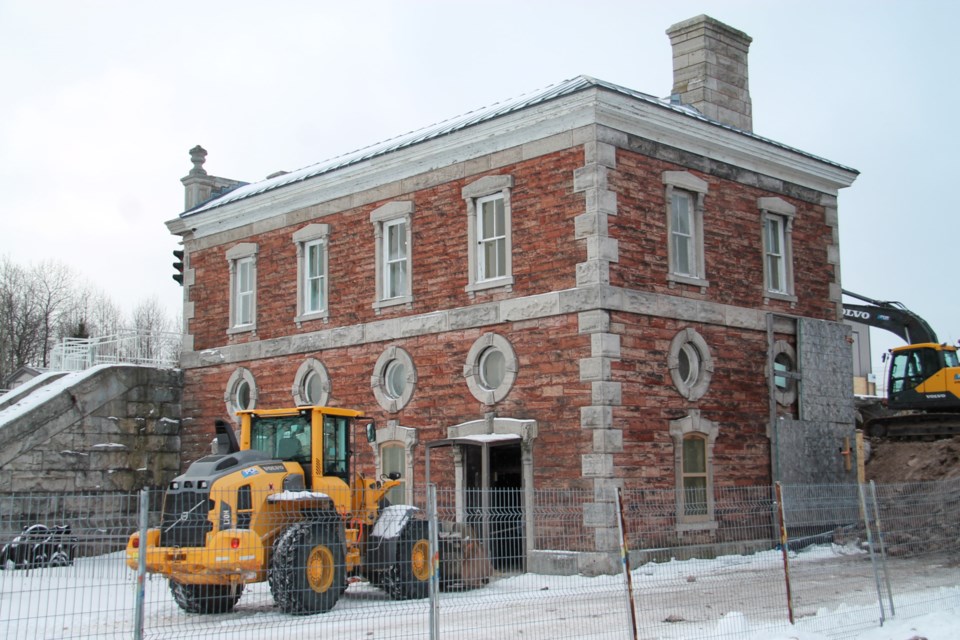The recreational lock at the Sault Ste. Marie Canal National Historic Site will remain closed until August.
The closure is necessary to manage restoration work on the site’s historic Powerhouse, Parks Canada stated in a release Wednesday.
Ground work is needed to stabilize the building’s foundation. Water levels in the lock are having an effect on water levels in the construction area. The lock’s water levels must be kept low so that the necessary ground work can be completed.
“Parks Canada recognizes this temporary closure impacts water-based visitation to the national historic site for the 2024 season and appreciates the understanding from visitors. Land-based visitation remains largely unchanged, and the Sault Ste. Marie Canal National Historic Site looks forward to welcoming visitors with the Visitor Centre, Exhibit, and programming opening to the public on May 20, 2024. Access to the grounds, South St. Mary’s Island, and Whitefish Island will not be affected during the temporary lock closure,” Parks Canada wrote.
Parks Canada and its project contractor are working together to conduct tests throughout the course of the ongoing Powerhouse foundation work to determine exactly when the lock can reopen.
As reported earlier by SooToday in January, the federal government announced $7.4 million in funding for the Sault Ste. Marie Canal National Historic Site as part of an ongoing effort to revitalize the site’s historic buildings.
That $7.4 million is specifically earmarked for structurally stabilizing the Powerhouse. Work at the Powerhouse began in late Dec. 2023 and is expected to continue for approximately two years.
The sandstone Powerhouse, built in 1894, is home to the first electrically powered lock in the world. The Powerhouse building was a major technological achievement and helped connect the Great Lakes during the late-19th century.
“The end goal for us is to have visitors be able to enter the building, explore it and appreciate it for its historic significance to the site,” said Megan Miller, Parks Canada spokesperson in an interview with SooToday in January.
“It is the reason for our designation as an historic site, being the very first electrically operated lock in the world. We purchase our electricity now but the power was generated from the power house here until the 1940s so it is significant to the history of not only Sault Ste. Marie but of Canada. It’s something that we’re really proud of and we’re excited to move forward in the next phases and have people explore the building again and see what it’s all about,” Miller said.
Since 2015, approximately $18.5 million in federal funding has gone to other major improvements at the Sault Ste. Marie Canal National Historic Site.
Those improvements include the restoration of the site’s Stores building, repairs to the Superintendent’s Residence, the design and repaving of the site’s entry road and the creation and opening of a new Visitor Centre and exhibit space.
The full text of Parks Canada’s April 17, 2024 release follows:
In order to manage restoration work of the Powerhouse building at the Sault Ste. Marie Canal National Historic Site, Parks Canada requires the recreational lock to remain closed until approximately August 2024.
Critical in-ground work is required to stabilize the foundation of the historic Powerhouse building, which is under threat from ground water intrusion. The fluctuating water levels during the recreational locks’ operation is impacting water levels within the construction area. Maintaining low water levels in the lock area ensures conditions remain dry for this important in-ground work.
Parks Canada recognizes this temporary closure impacts water-based visitation to the national historic site for the 2024 season and appreciates the understanding from visitors. Land-based visitation remains largely unchanged, and the Sault Ste. Marie Canal National Historic Site looks forward to welcoming visitors with the Visitor Centre, Exhibit, and programming opening to the public on May 20, 2024. Access to the grounds, South St. Mary’s Island, and Whitefish Island will not be affected during the temporary lock closure.
In the interim, the Soo Locks on the Michigan side of the St. Mary’s River will be open and can continue to be used by recreational boaters and tourism operators. There are no fees to pass through the Soo Locks, nor need to report with Customs for transient boaters who are not planning to moor or disembark their vessel.
Parks Canada and the project contractor are working closely together and have established checkpoints through this current phase to test the effectiveness of the work completed and allowing re-evaluation of lock opening timelines. Parks Canada will work closely with local tourism operators, stakeholders and partners to support a successful tourism season across the region and will continue to communicate expected timelines and updates as the project progresses.
The Government of Canada is investing in the Sault Ste. Marie Canal National Historic Site as part of the largest federal infrastructure investment program in the history of Parks Canada. This project is part of the approximate $18.5 million in federal investments to revitalize the site’s Historic Core; a cluster of heritage buildings made up of the Carpentry Shop, Stores Building and Blacksmith's Shop, as well as the Powerhouse and surrounding landscape.
